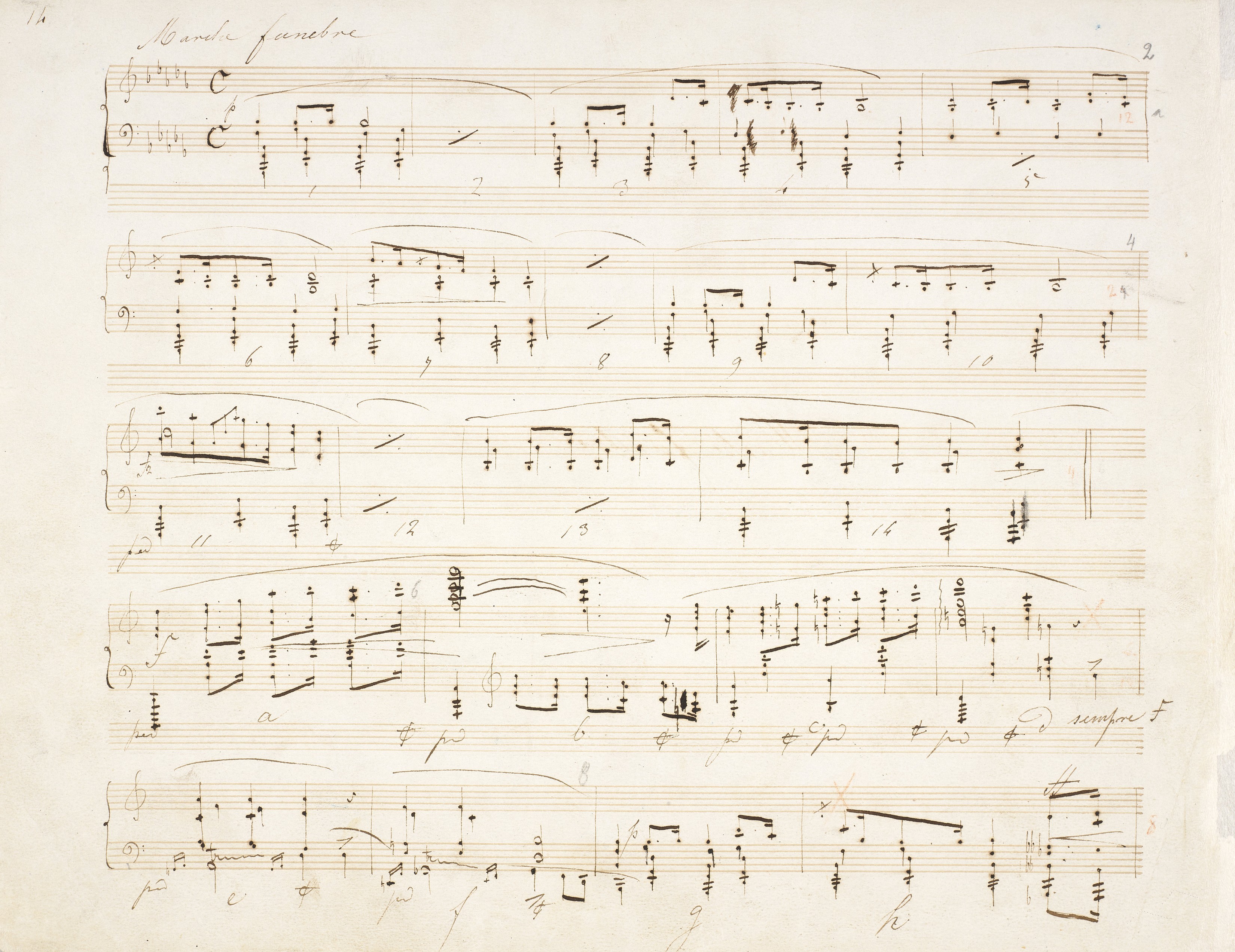



It is not clear which of the sources based directly on [A] – GC and FE1 – conveyed the range more accurately and, as a consequence, also the sense of the  hairpin. Both versions have their stylistic advantages and can be convincingly justified, as far as the source aspects are concerned:
hairpin. Both versions have their stylistic advantages and can be convincingly justified, as far as the source aspects are concerned:
- The sign in FE clearly emphasises the culminant appogiatura of the melodic line. Chopin could have added it in [A] already after having prepared GC.
- The sign in GC extends the culmination's release into the entire bar, somehow considering the counterpointing part of the L.H. The sign could have also been added by Chopin, if in [A] there were initially no dynamic signs here.
In the main text we give the  sign according to the base source, i.e. FE. The version of GC can be considered to be an equal variant.
sign according to the base source, i.e. FE. The version of GC can be considered to be an equal variant.
The accent in GE1 is undoubtedly a result of misunderstanding of the notation of GC, which was corrected in GE2mar (→GE2).
Similarly in bars 24, 70 and 78.
Compare the passage in the sources »
category imprint: Interpretations within context; Differences between sources
issues: Long accents, Inaccuracies in GE, Scope of dynamic hairpins, GE revisions
notation: Articulation, Accents, Hairpins




